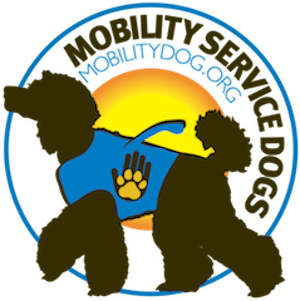How to Understand Dog Body Language: Eyes and Ears
Gorgeous Brown Poodle Laying on the Pavement
Welcome to Part Two of “How to Understand Dog Body Language.”
Part One of this series explored body language through the dog’s tail. Today, we’ll take a closer look at how dogs communicate through their eyes and ears.
Dog Body Language: The Eyes
According to the AKC, “you can learn a lot about your dog’s internal state by looking at their eyes.” The eyes offer invaluable clues along with other forms of body language in properly understanding what your dog is trying to convey. For example:
“Whale Eyes” (Showing More of the White) Can Mean the Dog Feels Uncomfortable in the Situation
Dogs indicate they are happy or calm with soft eyes and relaxed eyelids.
On the other hand, guarding or aggressive behaviors can be portrayed with a hard stare signaling the dog’s negative or uncomfortable state of mind. If the perceived threat does not back down, the hard stare can lead to an aggressive response.
Another common form of eye communication is known as the “whale eye.” This involves showing more of the whites of the eyes than normal and indicates the dog is feeling stressed, anxious, uncomfortable, or even afraid.
Dilated Pupils May Mean a Dog is Feeling Stress or Fear in the Moment
Has your dog ever looked away and avoided eye contact? You might think your dog is ignoring you or being stubborn. Instead, your dog is trying to convey his discomfort while also trying to calm or diffuse the situation.
Dilated pupils are also an important piece in deciphering what your dog is feeling. Heavily dilated pupils may appear so large that almost all iris color is eliminated. Pupils often enlarge in size because of:
Emotional responses.
Allowing in more light to see properly.
Involuntary responses to what the dog’s nervous system is feeling (stress, fear, arousal, or excitement; also known as “flight or fight”).
Remember to observe all body language and signals along with the dilation of the dog’s pupils for the best interpretation and response. Avoid direct eye contact and/or staring to avoid escalating your dog’s discomfort and unease and any potential negative response.
Next, let’s take a closer look at how dogs communicate through their ears.
Dog Body Language: The Ears
This is one area your dog has an advantage over his human dog parents; communicating through his ears! Keep reading to learn how the position of your dog’s ears can tell you how he’s feeling in the moment.
Understand Dog Ear Positions with this Fun Graphic!
Erect K9 Ears Indicates the Dog’s Focus
Ears Erect and Alert
Ears that are “standing at attention” indicate alert focus. Follow the dog’s gaze to identify what they are focused on.
Ears Back
Have you noticed how your dog puts his ears back when you go to pet him? This is an example of respect and submissiveness from your dog. Along with a wagging tail, your dog is communicating that he is happy! Of, if you are talking to your dog, they may put their ears back to show they are being attentive to you.
But, if your dog’s ears are tucked back along with a tucked tail, this may be a sign of the dog being nervous or unsure. This is why it is so important to intimately understand your dog’s body language.
Ears that are extremely flattened or pinned against the head mean the dog is fearful. Never force a dog to accept attention while he is exhibiting fear.
Ears Constantly Changing Positions
If your dog’s ears are moving in different directions, it’s a clear indication that he is trying to figure something out. They may be confused and unsure how to react or how to feel about it. Stay calm and lead your dog through the situation to show him there’s nothing to fear.
Finally, the Neutral Ear Position
When dogs are calm and happy, their ears are in their natural, relaxed position.
A Happy and Calm Dog
Remember, understanding your dog’s body language is critical for bonding, effective communication and overall training!
Spend time observing your dog and his common ways of communicating through his body language.
Watch for Parts 3 and 4 about how your dog communicates through their body posture and facial expressions coming soon!
It’s Our Fifth Birthday at MobilityDog!
Call 530-263-4770 to RSVP by March 1st!






